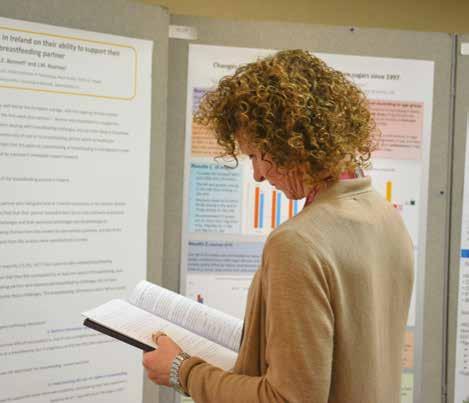
2 minute read
How not to write an abstract
Dr Bernard Corfe, Theme Lead, Cellular and Molecular Nutrition
During a recent round of reviewing abstracts for a forthcoming Nutrition Society conference we noticed an exceptionally high rejection rate compared to normal. Many of you may well be wondering how to get an abstract rejected, so I have set out some common strategies used:
Data. One way to guarantee your abstract will be rejected is by not including any data. Without data, it is impossible to answer most research questions. Dataless abstracts appear opaque and possibly evasive about something you might have done, or you are writing in slightly vague terms about something you are planning to do in the future. We do not accept abstracts on your plans for future research. In lieu of your data, the reviewer has little to review and the time spent preparing your abstract will have been in vain.
Statistics. Statistics are a great tool for testing whether your data are significant (though of course if you do not have data, you cannot have statistics). Unless you are deliberately designing a pilot or developing a method, a P value of <0.05 is the usual absolute cut off for considering a difference is “real”, (Fischer actually suggested the <0.050.01 region was only really worthy of further examination, rather than being true; furthermore much more stringent thresholds are needed for informatics data). If your analysis gives a P >0.05 do not ignore the statistics and claim the effect is real, despite being not significant. It is an oxymoron that will guarantee rejection.
Double Negative. You should never not underestimate the potential decreased lack of unclarity that double negatives can do to undo your prose. Confused? Clear, straightforward statements will explain your research to the reviewer; double negatives, however, will confuse reviewers and doom your manuscript to rejection.
Integrity. Your manuscript will get rejected if you do not consult with any of your co-authors or your supervisor about whether they agree to publication. Similarly, if you skip the evidence of any relevant ethical approvals for your study, treatment of your animals, blinding of your analysis, your abstract will be rejected.
Formatting. There is no simpler way to showcase carelessness and a lack of effort than with poor formatting. Leaving in track changes, comments about the reviewers, ignoring word limits and using a range of fonts and font sizes will set you on the path to rejection. If accepted, abstracts presented at Society conferences will be published in the Proceedings of the Nutrition Society and therefore the minor inconvenience of formatting is a major concern if your research is published!
All of these issues will be spotted by experienced reviewers so if rejection is not your goal, it is vital that your abstract is approved by your supervisor and all co-authors.
Still in doubt?
Dr Bernard Corfe and Professor Basma Ellahi run a scientific writing for publication workshop for the Society which receives an ‘Excellent’ rating from delegates and is “great value for money” and “very valuable and will be useful”. Future repeats of this workshop will be announced on the Nutrition Society’s Training and Education pages: www. nutritionsociety.org/events/training




